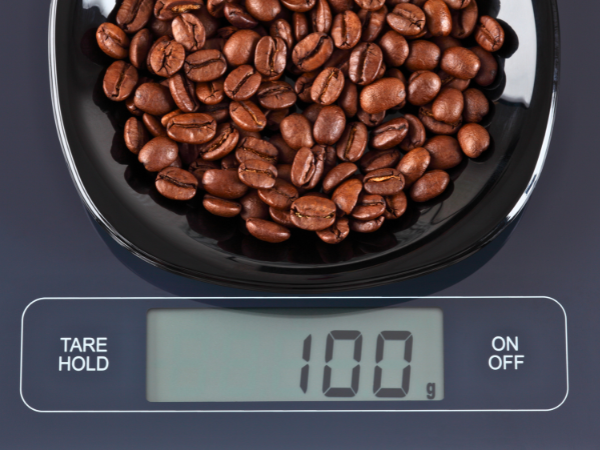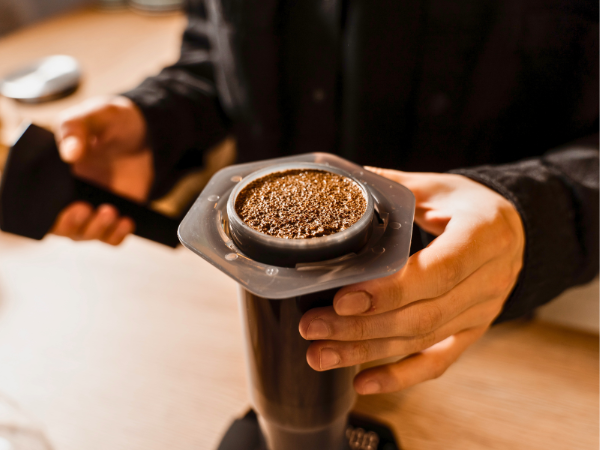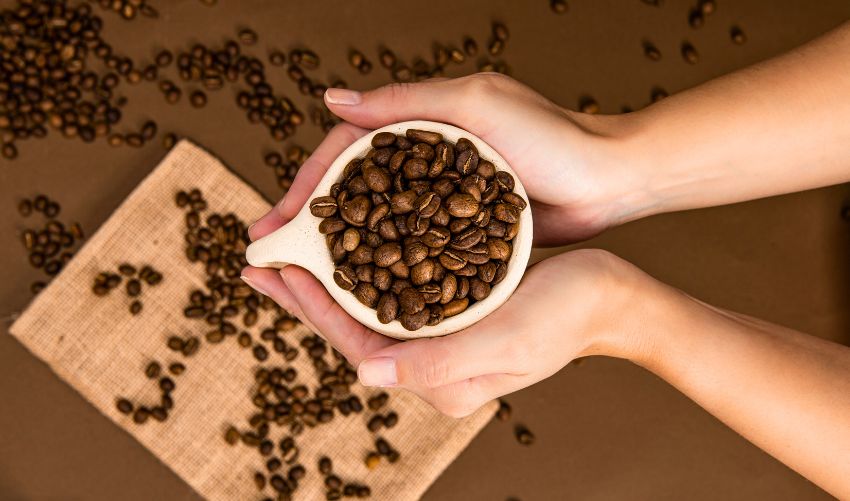When brewing the perfect cup of coffee, one question often lingers in your mind: how many coffee beans should you use? The right amount can vary based on your taste preferences, the brewing method, and even the type of beans you choose.
Finding Your Ideal Coffee-to-water Ratio
Different brewing methods require different amounts of coffee. This section explores how to measure your coffee beans and water for the best cup.
The “Golden Ratio” Principle
The “Golden Ratio” is a simple rule. It helps achieve a balanced flavor target. Aim for around 10 grams of coffee for every 6 fluid ounces (180 ml) of water. This balance prevents your brew from being too strong or too weak. Many coffee lovers find this ratio enjoyable.
This ratio serves as a universal starting point. Adjust it based on your taste. Experiment with different amounts to find what you enjoy best.
Factors Influencing Your Coffee Amount
Several factors influence how much coffee you should use. Bean variety plays a significant role. Different bean origins can perform better with slight adjustments. A lighter bean may need a bit more coffee. Darker beans may require less.
Roast level matters too. Light, medium, and dark roasts extract differently. They may require varied amounts of coffee for the best flavor.
Your brewing method also dictates specific ratios. Here are some common methods:
- Drip coffee makers usually follow the golden ratio.
- French presses often benefit from slightly more coffee.
- Espresso demands a finer grind and more coffee.
Adjust the amount of coffee based on your taste. Find the perfect balance for your preferred method.
Measuring Coffee By Grams: Precision For The Perfect Brew
Measuring coffee by grams is a precise method. This ensures each brew has the right flavor and strength. Using grams helps achieve a consistent taste every time.

Ideal Grams For Whole Coffee Beans
The recommended starting point is important for brewing coffee. Generally, use about 10 grams of whole beans per 6-ounce (180 ml) cup. This amount is commonly suggested for a well-rounded and balanced flavor. Here are some key points to remember:
- Achieving Balance: 10 grams works well for most coffee types.
- Roast Level Impact: Darker roasts often need slightly less coffee.
- Lighter roasts might benefit from more.
Using a scale can help you measure accurately. Here’s a simple table to guide you:
| Type of Coffee | Recommended Grams |
|---|---|
| Light Roast | 10-12 grams |
| Medium Roast | 10 grams |
| Dark Roast | 8-10 grams |
Adjusting the amount can improve your coffee experience. Finding the right balance is key to enjoyment.
Grams For Ground Coffee
Consistency is key for ground coffee as well. For every 6-ounce (180 ml) cup, targeting 10 grams of ground coffee is a reliable measure. This specific weight helps produce a consistently satisfying and flavorful cup. Here are some important details:
- Accuracy Tip: A kitchen scale provides the most accurate measurement for ground coffee.
- Ground coffee can lose freshness quickly, so measure just before brewing.
- Experiment with slight adjustments to find your perfect strength.
Each coffee type may vary slightly in taste based on grind size and brewing method. Here’s a summary:
| Brew Method | Grams of Ground Coffee |
|---|---|
| French Press | 10-12 grams |
| Drip Coffee | 10 grams |
| Espresso | 7-9 grams |
Finding the right amount for your brew method can enhance your coffee enjoyment. Adjust as needed for the best taste.
Measuring Coffee By Tablespoons: A Convenient Guide
Measuring coffee by tablespoons offers a simple and effective way to achieve the perfect brew. This guide helps you know how to measure whole coffee beans and ground coffee accurately.
Whole Coffee Beans Per Tablespoon
Whole coffee beans are a favorite for many coffee lovers. A simple calculation shows that approximately 2 level tablespoons of whole coffee beans are needed for a 6-ounce (180 ml) cup.
Here’s a quick reference for measuring whole coffee beans:
| Strength Scale | Tablespoons | Grams |
|---|---|---|
| Light | 1 tablespoon | 5-6 grams |
| Medium | 2 tablespoons | 10-12 grams |
| Strong | 3 tablespoons | 15-18 grams |
Keep in mind that the actual amount can vary by grind. A coarser grind may need slightly more beans, while a finer grind may require less. With whole beans, freshness is key.
Ground Coffee Per Tablespoon
Ground coffee is convenient and easy to measure. For a 6-ounce (180 ml) cup, typically 1 to 2 tablespoons of ground coffee is a good starting point. Ground coffee has a different density than whole beans, which affects volume measurements.
Here’s a rough equivalence for ground coffee:
| Strength Guide | Tablespoons | Grams |
|---|---|---|
| Light | 1 tablespoon | 5-7 grams |
| Medium | 2 tablespoons | 10-14 grams |
| Strong | 3 tablespoons | 15-21 grams |
Adjusting your coffee strength is easy. Start with the recommended amounts, then modify based on your taste. Freshly ground coffee can greatly enhance the flavor of your brew.

Measuring Coffee By Ounces: For Broader Batches
Understanding how to measure coffee by ounces can simplify your brewing process. This method is helpful for making larger batches of coffee. For a consistent flavor, knowing the right amount of coffee beans or ground coffee is essential.
Whole Coffee Beans Per Ounce (By Weight)
Measuring whole coffee beans by weight ensures you get a consistent flavor. A kitchen scale is crucial for precise ounce measurements of whole beans. Here’s a simple guideline for a balanced brew:
- Aim for about 0.5 to 0.6 ounces of whole beans per 6-ounce (180 ml) cup.
Here’s a quick strength breakdown to help you choose the right amount:
| Strength | Ounces | Grams |
|---|---|---|
| Lighter | 0.5 oz | Approx. 14 grams |
| Standard | 0.6 oz | Approx. 17 grams |
| Stronger | 0.7 oz | Approx. 20 grams |
When measuring whole beans, remember that grind size can affect flavor. A finer grind may yield a more intense flavor, while a coarser grind often results in a lighter taste.
Ground Coffee Per Ounce (By Weight)
Measuring ground coffee is also important for flavor balance. For a good cup, use approximately 0.4 to 0.5 ounces of ground coffee per 6-ounce (180 ml) cup. This range helps achieve harmony between flavor and strength.
Here is a quick reference for ground coffee amounts based on desired strength:
| Flavor Profile | Ounces | Grams |
|---|---|---|
| Milder | 0.4 oz | Approx. 11 grams |
| Balanced | 0.5 oz | Approx. 14 grams |
| Bolder | 0.6 oz | Approx. 17 grams |
Adjusting the grind size can also affect the strength and taste. Experiment with these measurements to find what suits your palate best.
Adjusting For Coffee Type And Strength Preference
Adjusting for coffee type and strength preference is key. Each roast level has its unique characteristics. These differences affect how much coffee you should use.
Roast Level And Gram Recommendations
The roast level significantly impacts the flavor and strength of your coffee. Here are some general guidelines:
- Light Roast: Consider 10-12 grams per 6-ounce cup to capture its nuanced flavors.
- Medium Roast: Stick to the 10 grams baseline for a balanced and accessible taste.
- Dark Roast: May require slightly less, around 8-10 grams, due to more rapid extraction.
Different beans will have different flavors. The amount of coffee needed can change based on how you brew it. Here’s a simple table for quick reference:
| Roast Level | Grams per 6 oz |
|---|---|
| Light Roast | 10-12 grams |
| Medium Roast | 10 grams |
| Dark Roast | 8-10 grams |
These recommendations serve as a starting point. You may need to adjust based on your personal taste.
Tailoring To Your Taste Buds
Your preference plays a big role in how much coffee you should use. Strength preference is a key factor. Some people enjoy a bolder flavor. Others prefer a milder cup.
To find your ideal brew:
- Start with the basics: Use the recommended grams for your roast level.
- Experiment: Increase coffee amount for a bolder flavor or decrease for a milder profile.
- Enjoy the process: Brewing coffee is an enjoyable journey of discovery.
Personal experimentation is essential. Adjust the grams slightly each time you brew. Take notes on what you like. This practice will help you refine your preferences.
